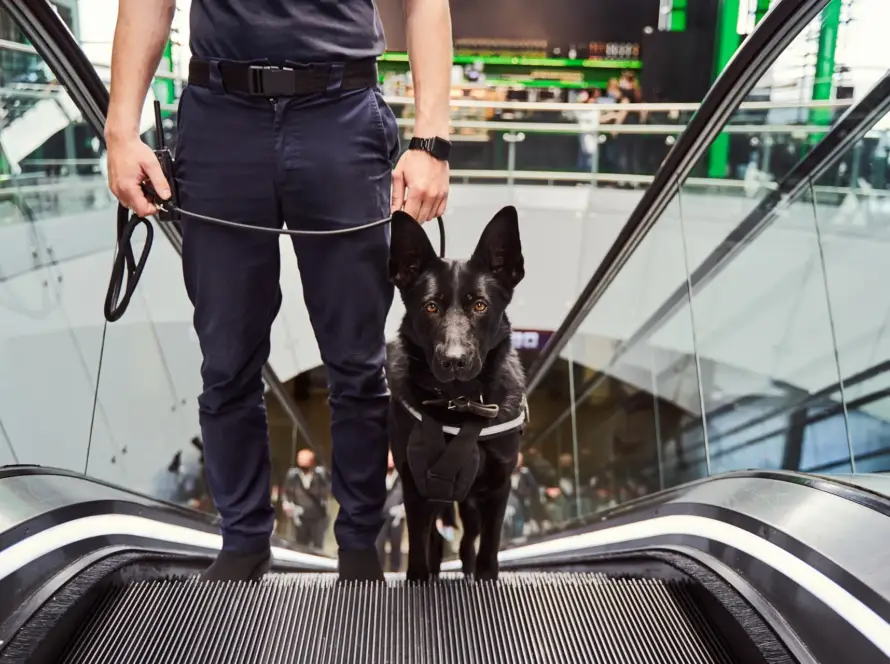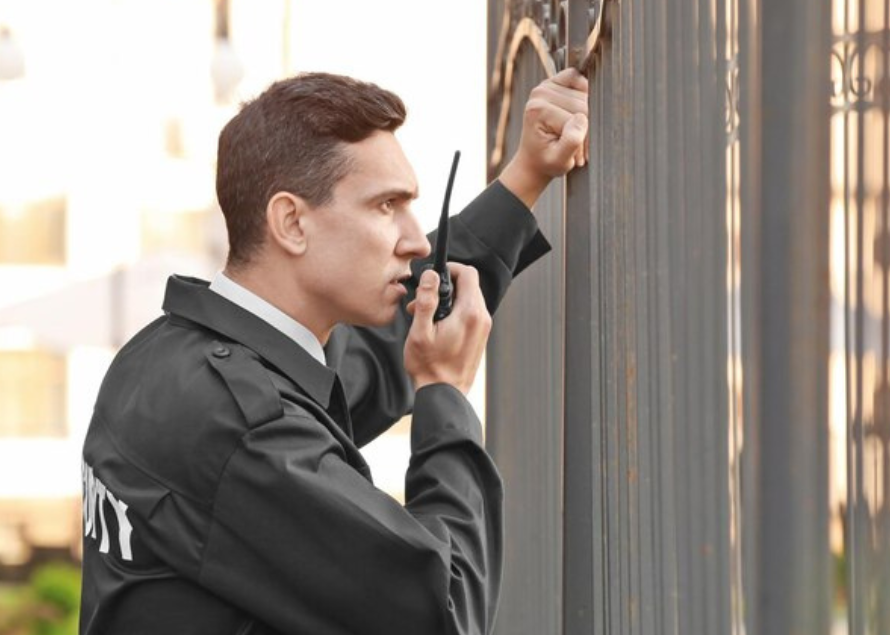Introduction:
Ensuring the security of a worksite is a fundamental responsibility for any construction or development project. Whether it is a commercial complex, residential site, or large-scale infrastructure development, controlling site access is essential to safeguarding workers, equipment, and valuable materials. Unauthorized entry can lead to theft, vandalism, safety hazards, and even project delays, resulting in significant financial and operational setbacks. Implementing stringent security measures not only protects assets but also ensures regulatory compliance and fosters a safe working environment. By integrating advanced construction site security services, such as access control systems, trained security personnel, and real-time surveillance, businesses can effectively minimize risks, enhance workforce efficiency, and maintain seamless project operations.
Understanding the Importance of Site Security
Unauthorized access poses multiple risks, including property damage, financial losses, and endangering workers. Implementing a comprehensive security plan helps mitigate these threats while ensuring smooth operations. A construction site security company specializing in entry and exit control can help enforce strict measures to protect assets and personnel.
A secure site is not just about protecting materials and equipment—it is also about ensuring the safety of workers and visitors. Unauthorized individuals can pose serious threats, from theft to safety hazards. Ensuring that every person on-site is accounted for and has a valid reason to be there reduces potential risks and improves operational efficiency.
Best Practices for Entry and Exit Control
1. Implement a Strict Access Control System
A well-defined access control system ensures that only authorized individuals enter the site. This can be achieved through:
- Identification Badges: Employees, contractors, and visitors should carry unique identification badges to ensure legitimacy.
- Digital Access Systems: Implementing biometric scanners, key cards, or PIN-based access systems adds an extra layer of security.
- Visitor Logs: Keeping a detailed log of everyone who enters and exits the site helps monitor and review security breaches.
- Two-Factor Authentication: Some sites may require an additional security measure, such as a security PIN combined with biometric access, to further restrict entry.
2. Deploy Professional Security Personnel
Hiring professional security guard services ensures a human element in security, complementing technology-driven solutions. Security guards can:
- Verify credentials at entry points.
- Conduct security checks to prevent unauthorized items from entering the site.
- Monitor unusual activity and respond to security threats in real-time.
- Assist in emergency situations, such as medical crises or fire evacuations.
3. Install Surveillance Systems
CCTV cameras strategically placed around entry and exit points enhance security by providing real-time monitoring. Advanced features such as motion detection, night vision, and remote access help security personnel maintain vigilance even after working hours.
A well-monitored site also acts as a deterrent for potential intruders. Knowing that every movement is being recorded makes unauthorized individuals think twice before attempting to trespass.
4. Use Perimeter Fencing and Barriers
Physical barriers such as fences, gates, and turnstiles create a defined boundary for a construction site. They help in:
- Preventing unauthorized vehicle and pedestrian entry.
- Controlling access points effectively.
- Reducing the risk of intruders sneaking in unnoticed.
- Ensuring that all personnel enter through designated security checkpoints.
5. Conduct Regular Security Audits
Security protocols should be regularly assessed to ensure their effectiveness. A construction site security company can conduct audits to identify weak spots and recommend improvements. These audits should include:
- Evaluating access control measures.
- Checking the functionality of security equipment.
- Assessing the performance of security guards and training them accordingly.
- Testing emergency protocols to ensure preparedness.
6. Implement a Layered Security Approach
A single security measure may not be enough to prevent unauthorized access. A layered security strategy includes:
- Physical Security: Gates, fences, and on-site security personnel.
- Electronic Security: Surveillance systems, alarms, and biometric access controls.
- Operational Security: Policies and protocols that dictate site security best practices.
- Cybersecurity Measures: Protecting digital records of access logs and surveillance footage from potential hacking threats.
Addressing Common Security Challenges
Even with robust security measures, challenges may arise. Here’s how to address them:
- Tailgating: Unauthorized personnel slipping in behind authorized workers can be prevented by using turnstiles and strict ID checks.
- Forged Credentials: Implementing biometric authentication and security watermarks on ID badges can prevent fake IDs from being used.
- Nighttime Security: Deploying security guards for night shifts, using motion sensor lighting, and integrating AI-powered surveillance can enhance security during off-hours.
- Emergency Situations: Having a well-trained team that can handle fire hazards, medical emergencies, or breaches is crucial for overall safety.
The Role of Security Training
Security is not just the responsibility of a construction site security company; it requires the participation of all site workers. Regular training sessions should be conducted to:
- Educate workers on security protocols.
- Encourage reporting of suspicious activities.
- Improve coordination between security guards and site personnel.
- Ensure all employees understand emergency procedures and evacuation protocols.
Leveraging Technology for Enhanced Security
Modern security technology has revolutionized site security. Some advanced solutions include:
- Drone Surveillance: Drones can provide aerial monitoring, especially for large-scale construction sites.
- AI-Powered Analytics: AI-driven surveillance can detect unusual movements and trigger alerts in real-time.
- Geofencing Solutions: Virtual geographic boundaries help track movement and restrict unauthorized access to sensitive areas.
- Smart Locking Systems: Remote-controlled locks and alarms provide enhanced security for storage areas.
Ensuring Compliance with Security Regulations
Many regions have strict regulations regarding site security. Construction companies must ensure compliance by:
- Conducting regular inspections.
- Keeping security logs updated.
- Collaborating with local authorities and emergency response teams.
- Ensuring all workers and security personnel are aware of legal security requirements and best practices.
The Impact of Strong Security Measures on Productivity
A well-secured site does more than just prevent unauthorized access—it improves overall efficiency. Workers feel safer, leading to higher morale and productivity. Additionally, fewer disruptions due to security breaches mean that projects can proceed on schedule without costly delays. A secure work environment ensures that workers can focus on their tasks without fear of potential threats, leading to better job performance and quality of work. Moreover, well-monitored sites reduce workplace accidents and legal liabilities, further contributing to a streamlined and efficient construction process.
The Future of Site Security
With advancements in technology, construction site security is evolving rapidly. In the future, we can expect:
- Biometric-based workforce management: Fingerprint or facial recognition for seamless access.
- Autonomous security robots: AI-powered robots that patrol construction sites and detect threats.
- Blockchain security logs: Secure and tamper-proof digital records of access logs and site activity.
- Enhanced cybersecurity measures: Protecting digital access records and surveillance footage from cyber threats.
Final Thoughts
A well-planned security strategy is essential to prevent unauthorized access and ensure the safety of a construction site. Partnering with a reputable security guard company can provide trained professionals to monitor entry points, conduct regular patrols and respond swiftly to potential threats. By implementing access control measures and leveraging advanced security technology, businesses can effectively safeguard their sites. Continuous evaluation and upgrades to security protocols further enhance protection, reducing risks and ensuring a secure working environment.
About Prowess Security
Prowess Security is a leading provider of comprehensive security solutions, specializing in construction site security services and security guard services. With years of experience in the industry, they offer tailored security solutions to meet the specific needs of construction sites, commercial properties, and other high-risk areas. Their services include 24/7 surveillance, access control management, manned guarding, mobile patrols, emergency response planning, and risk assessments. Committed to ensuring the highest level of security, Prowess Security employs a team of highly trained professionals equipped with cutting-edge technology to safeguard assets, personnel, and operations against any potential threats.


